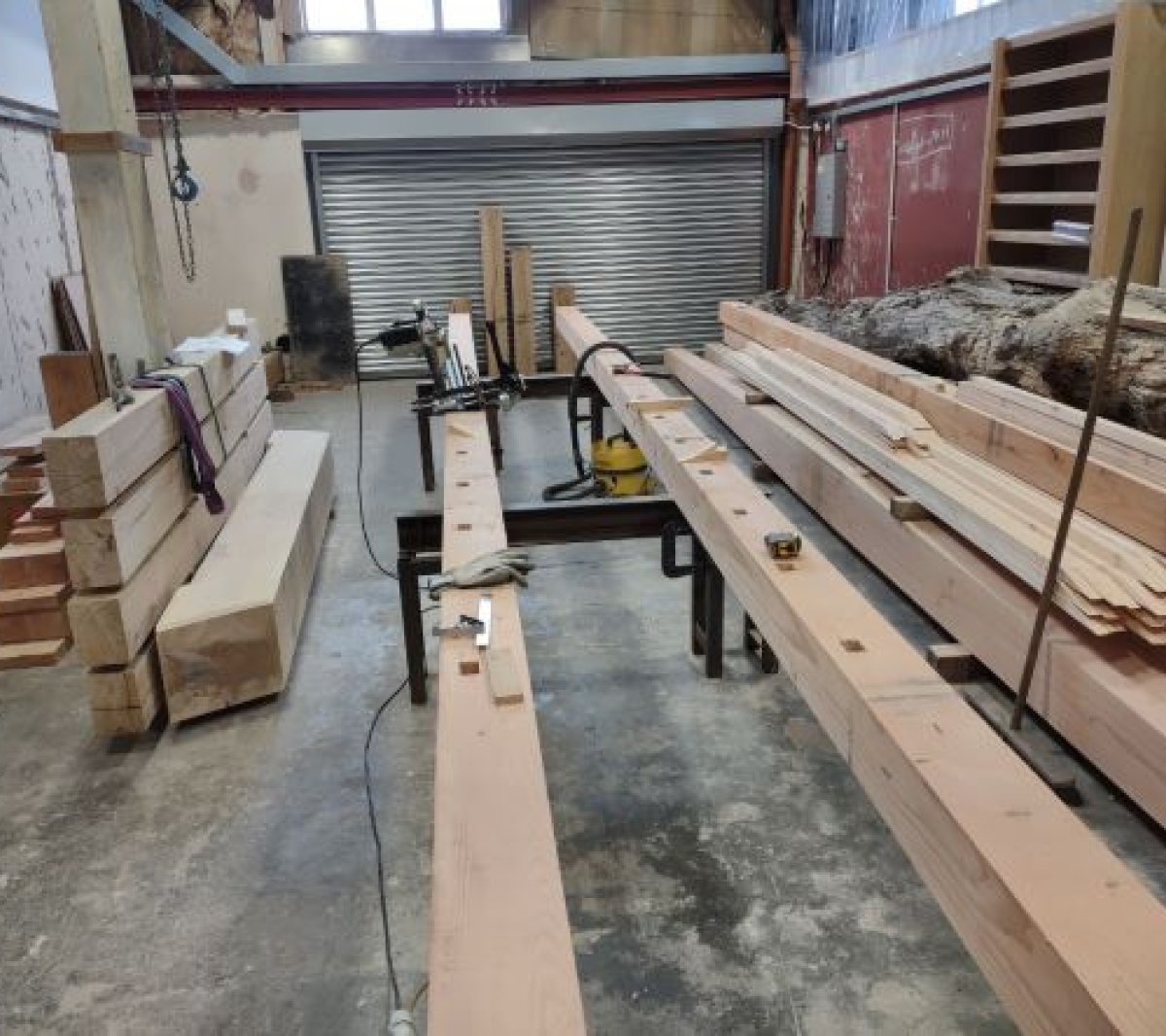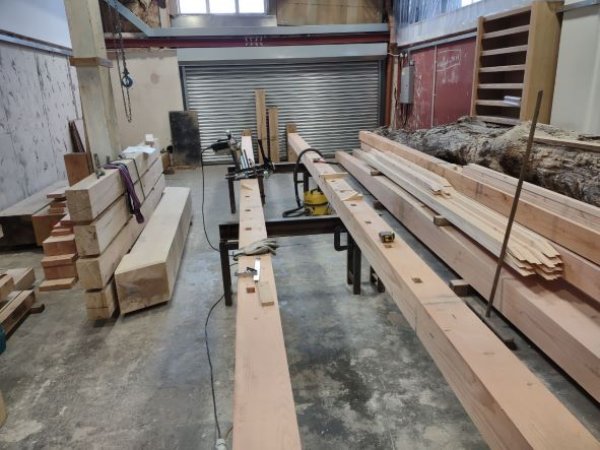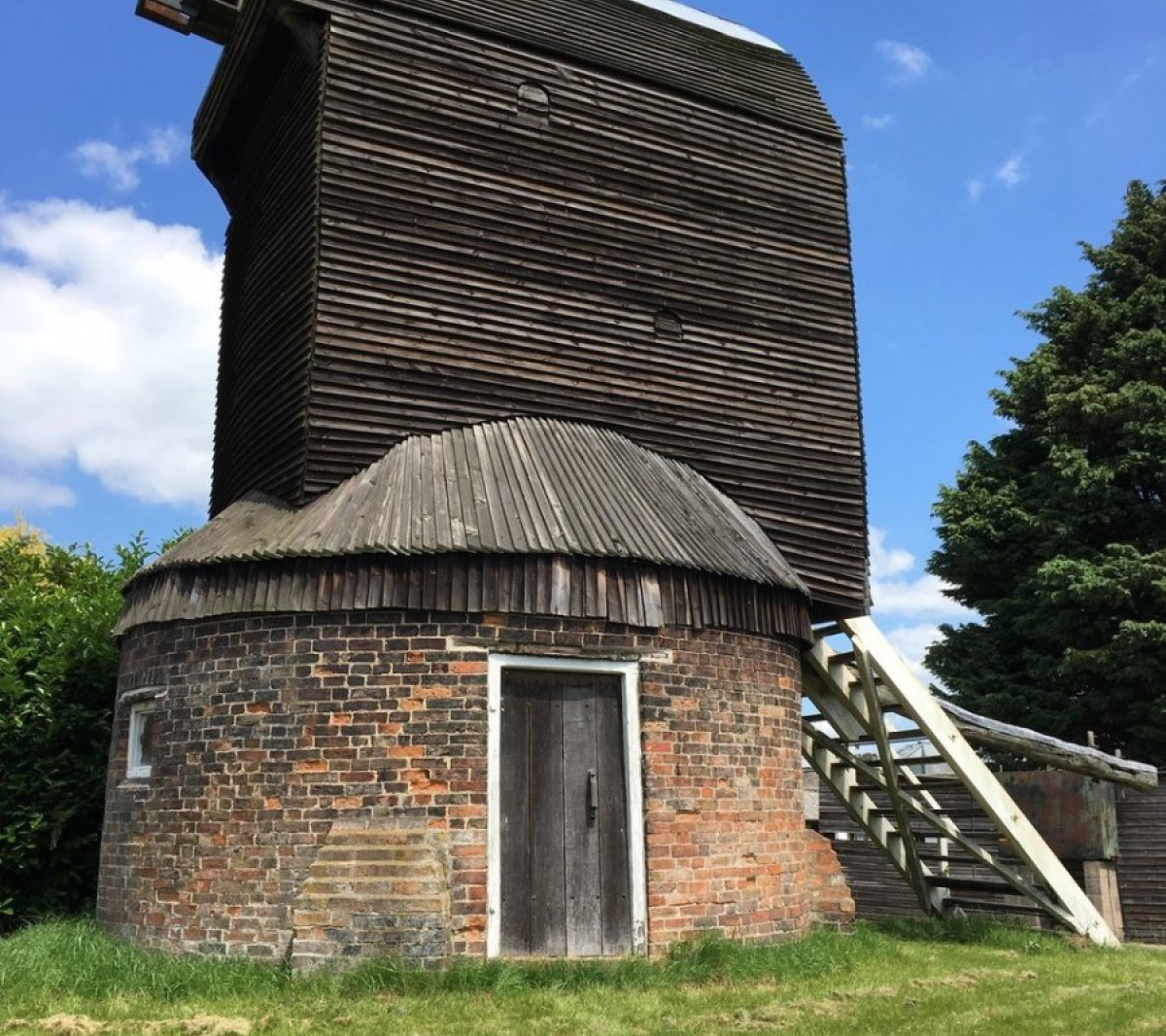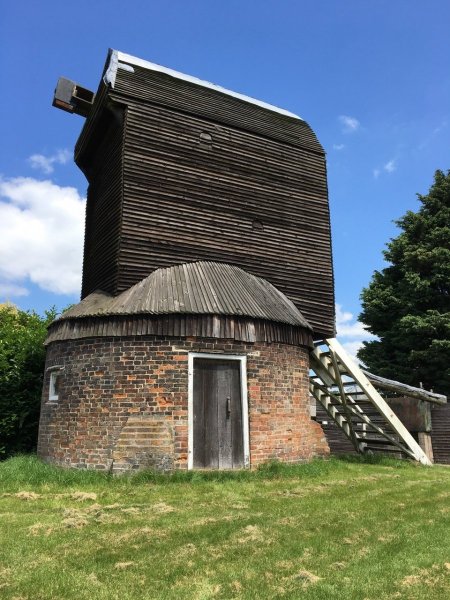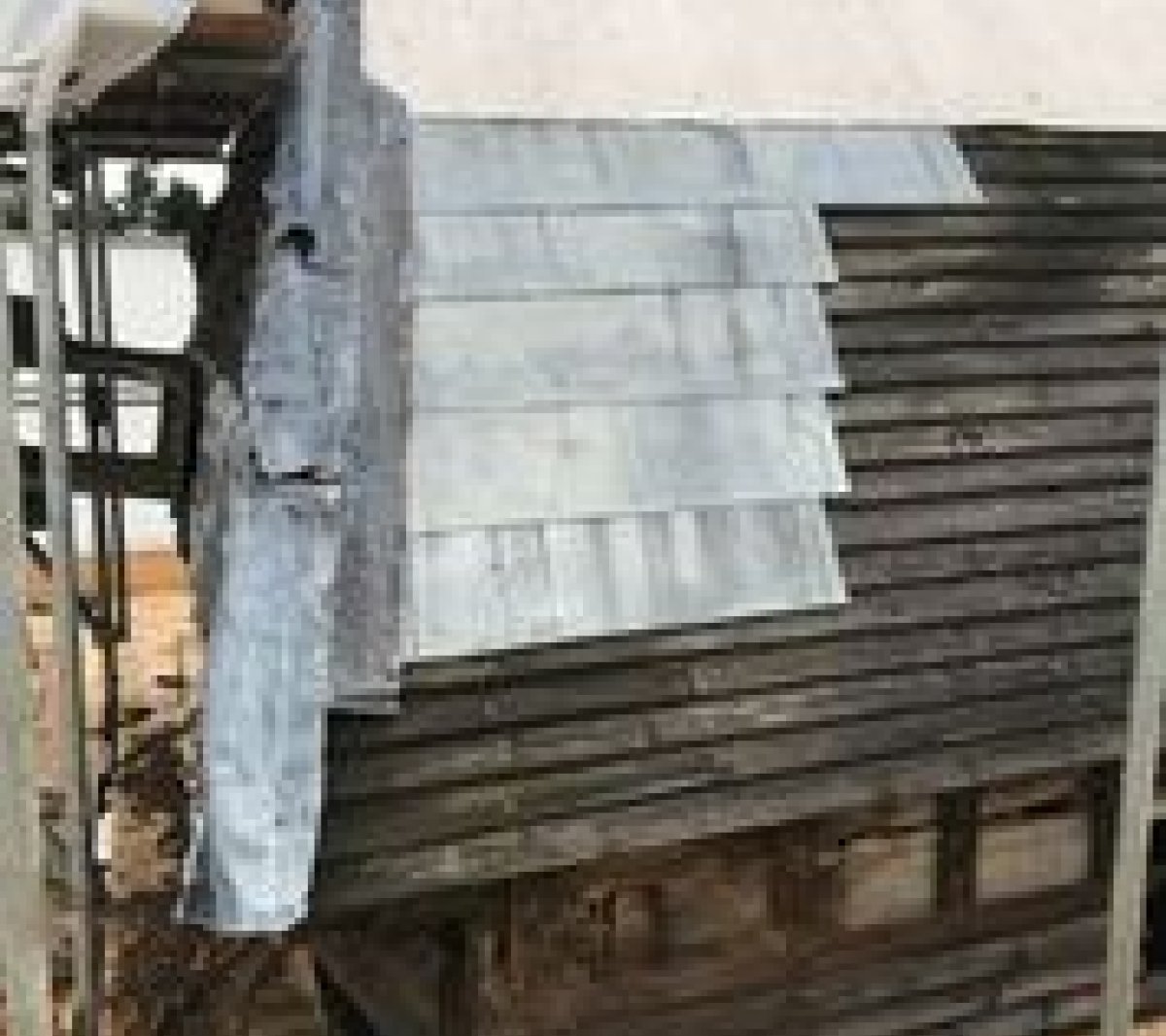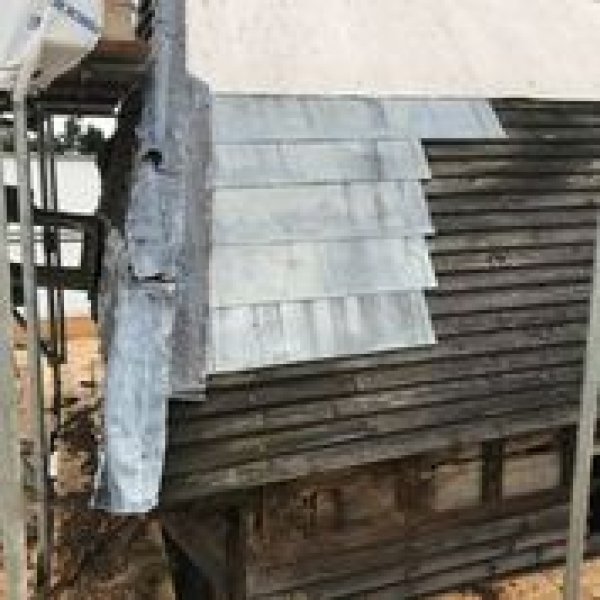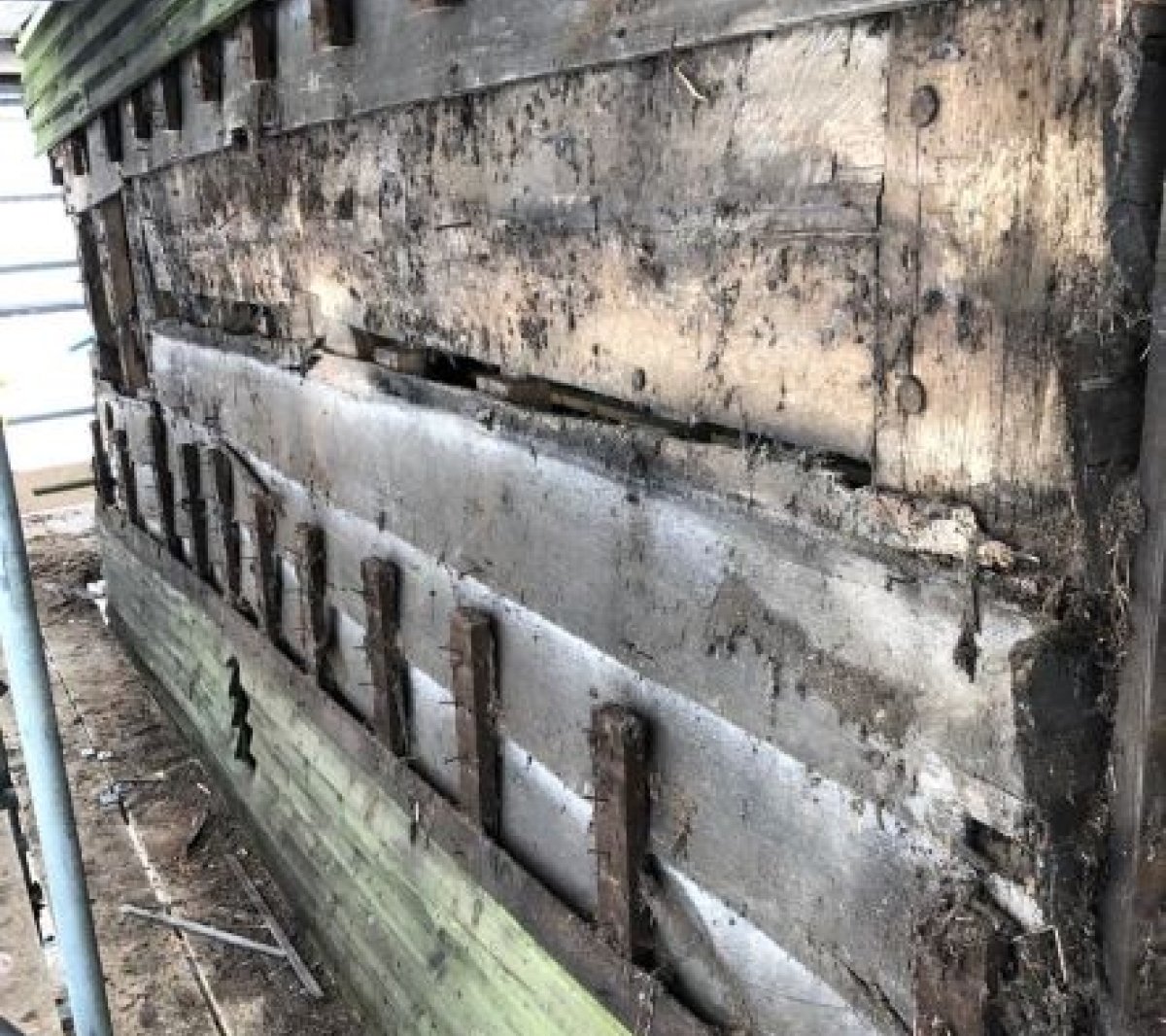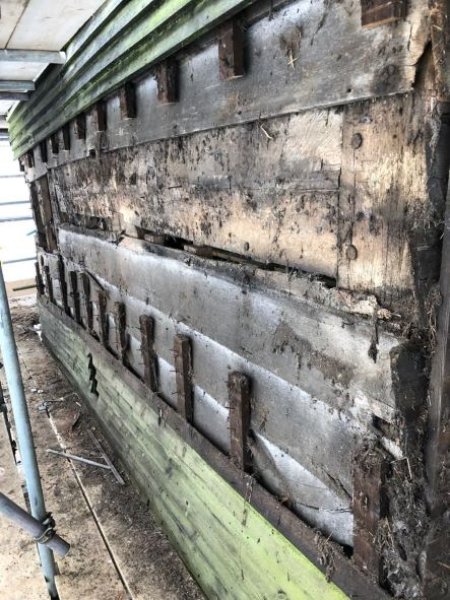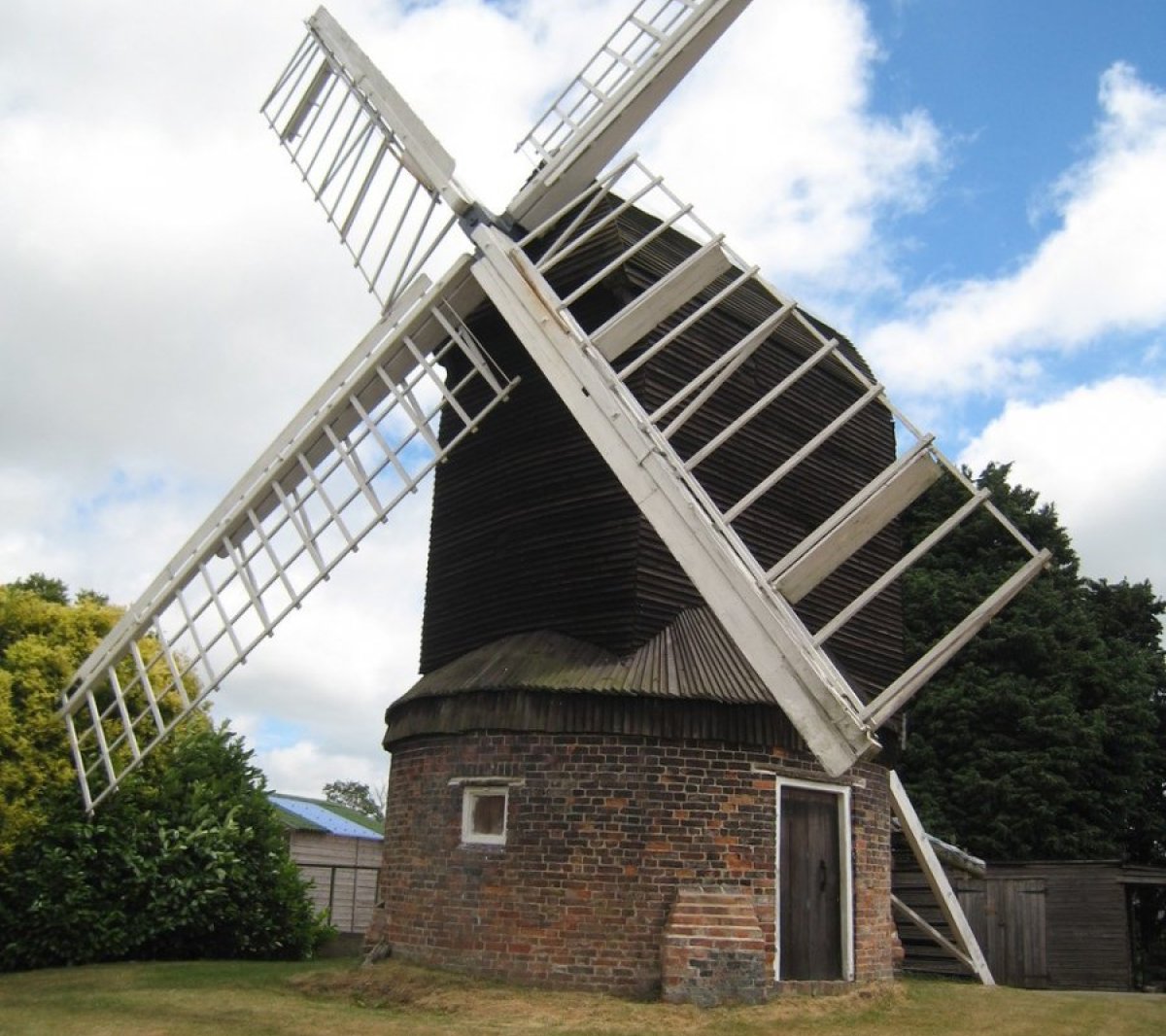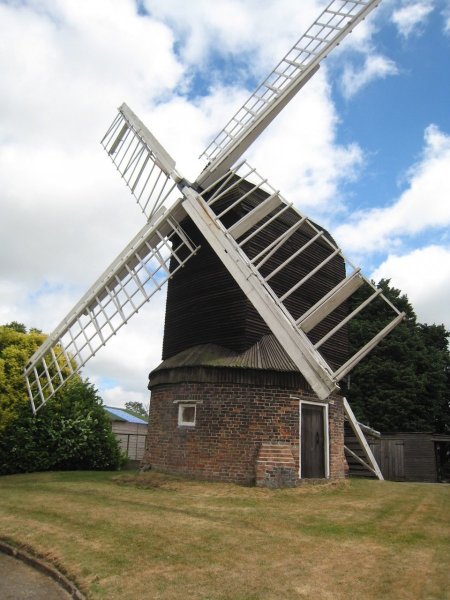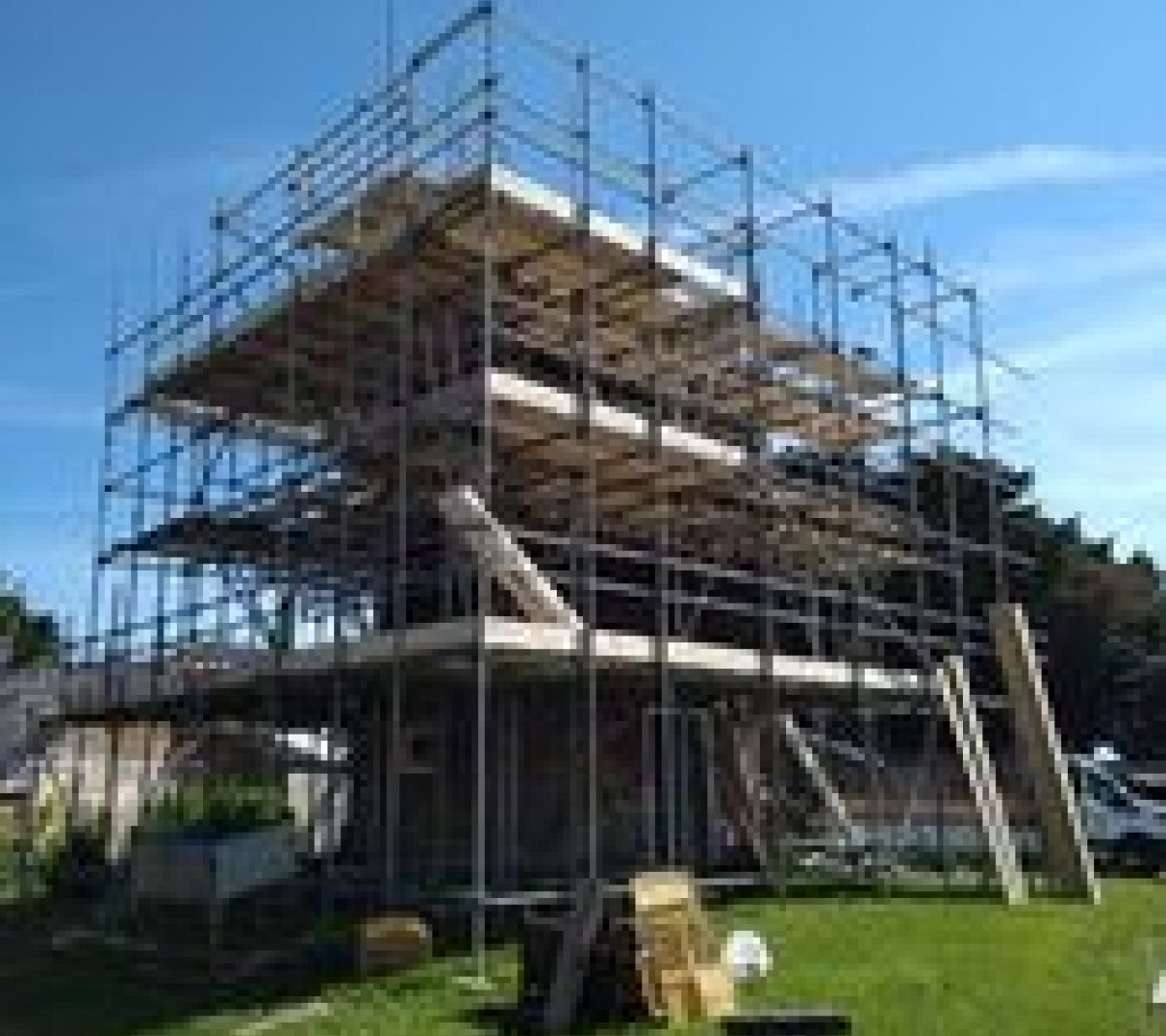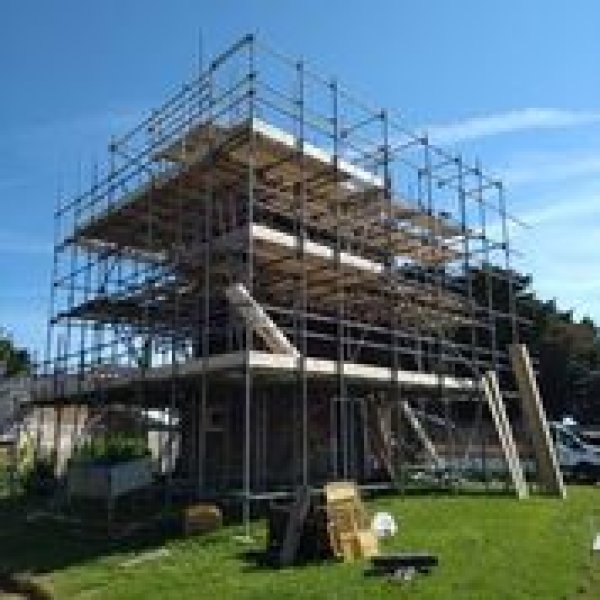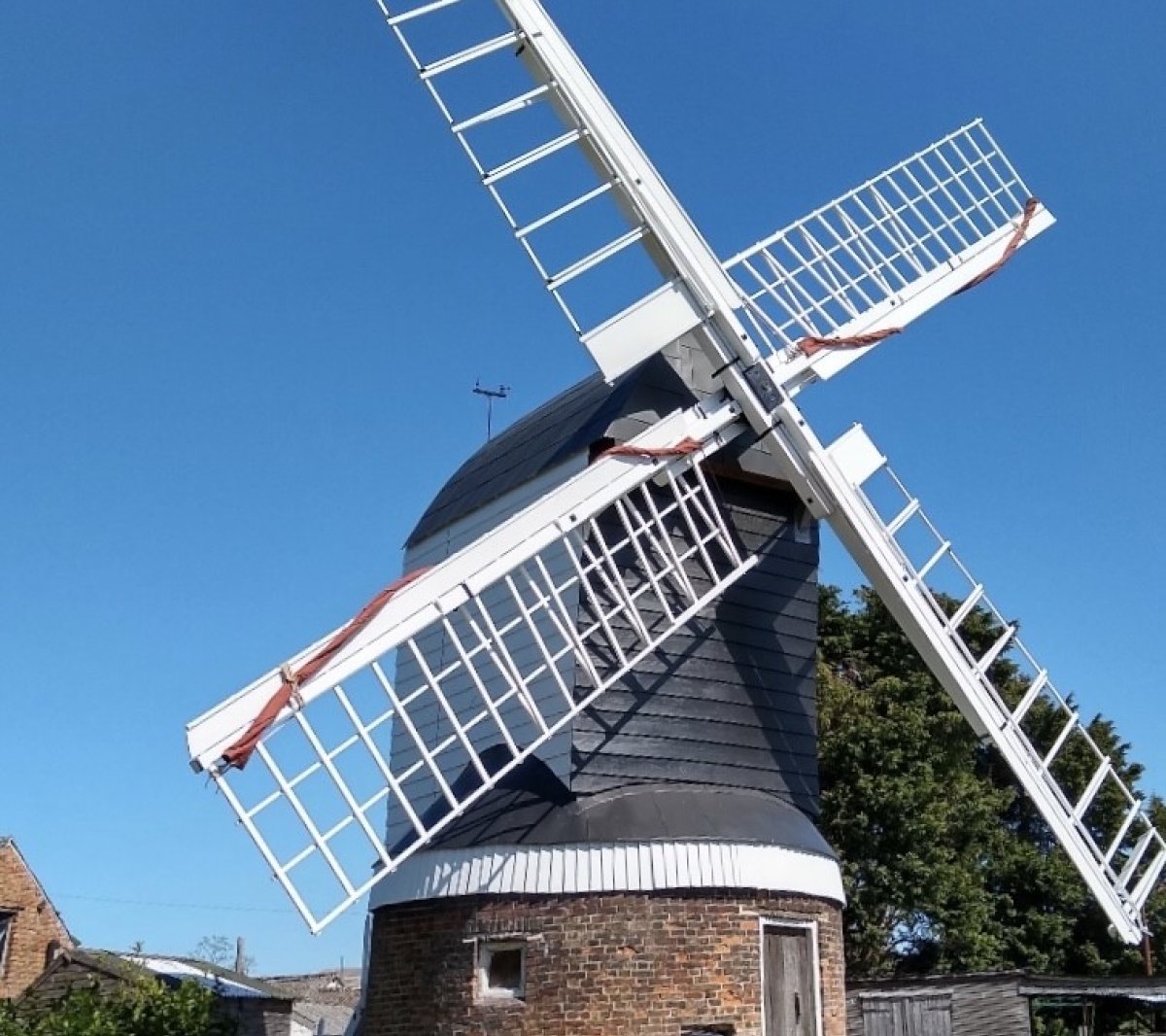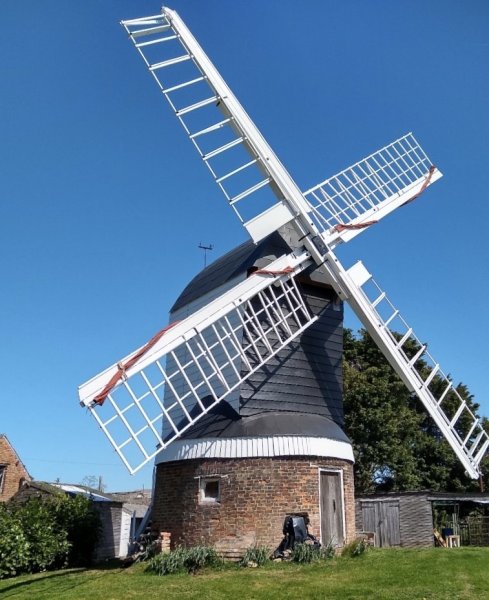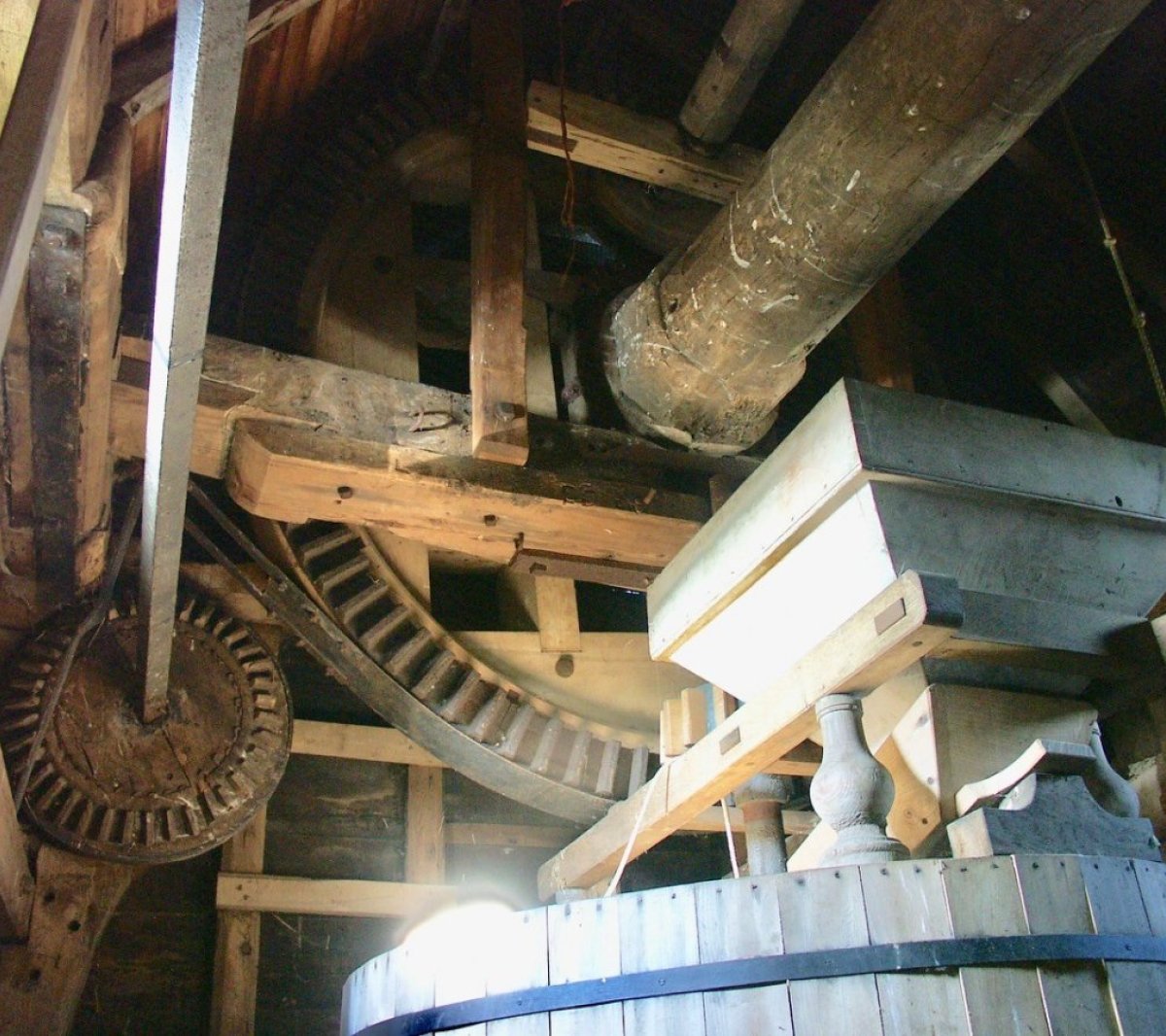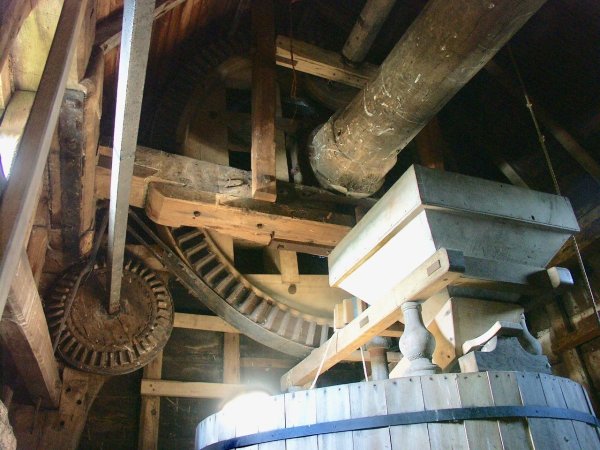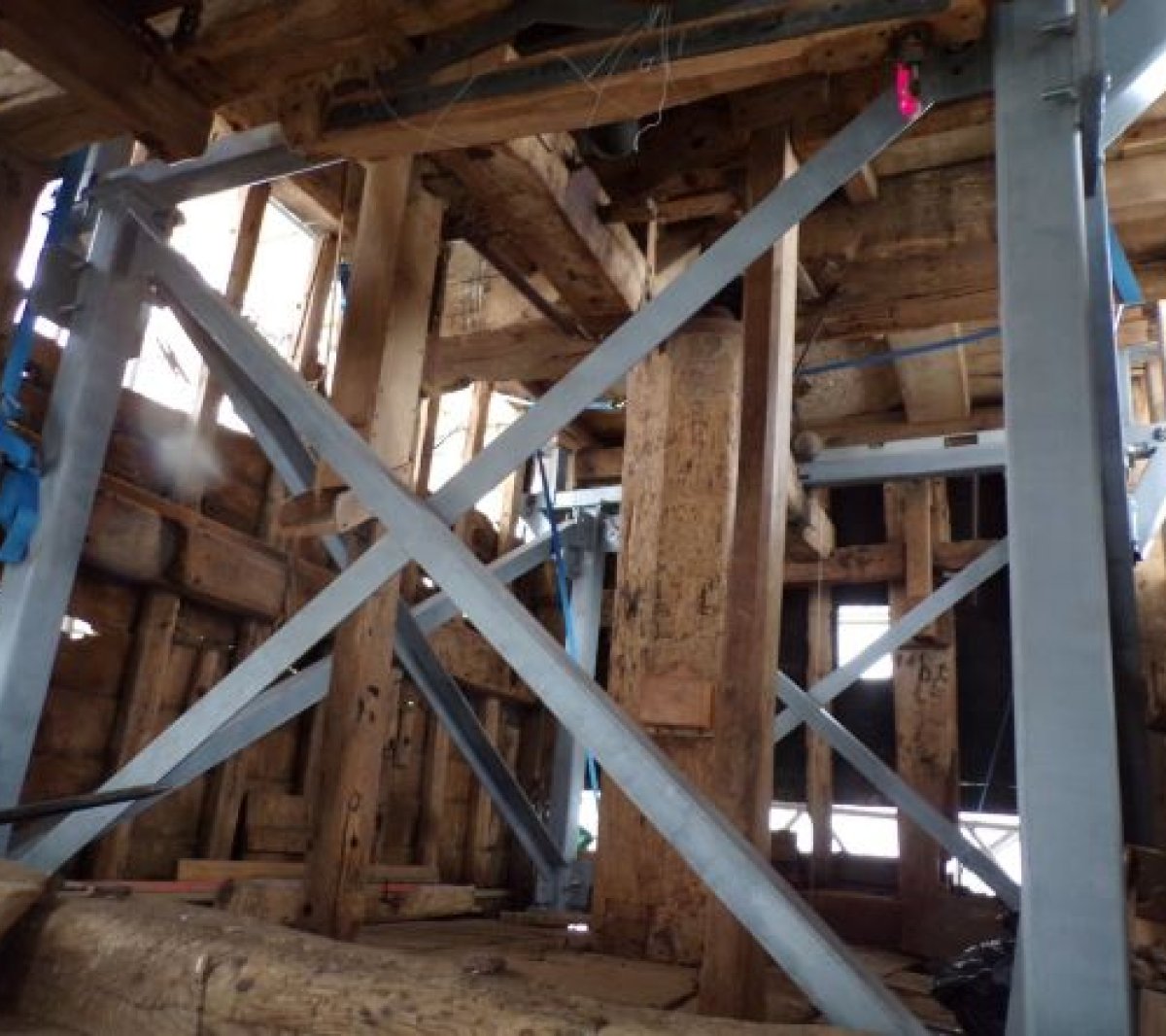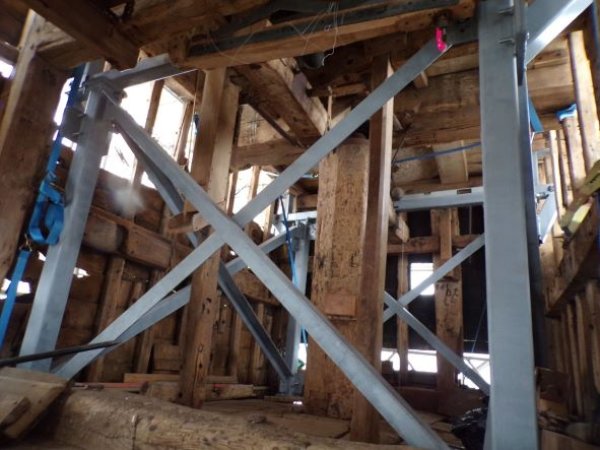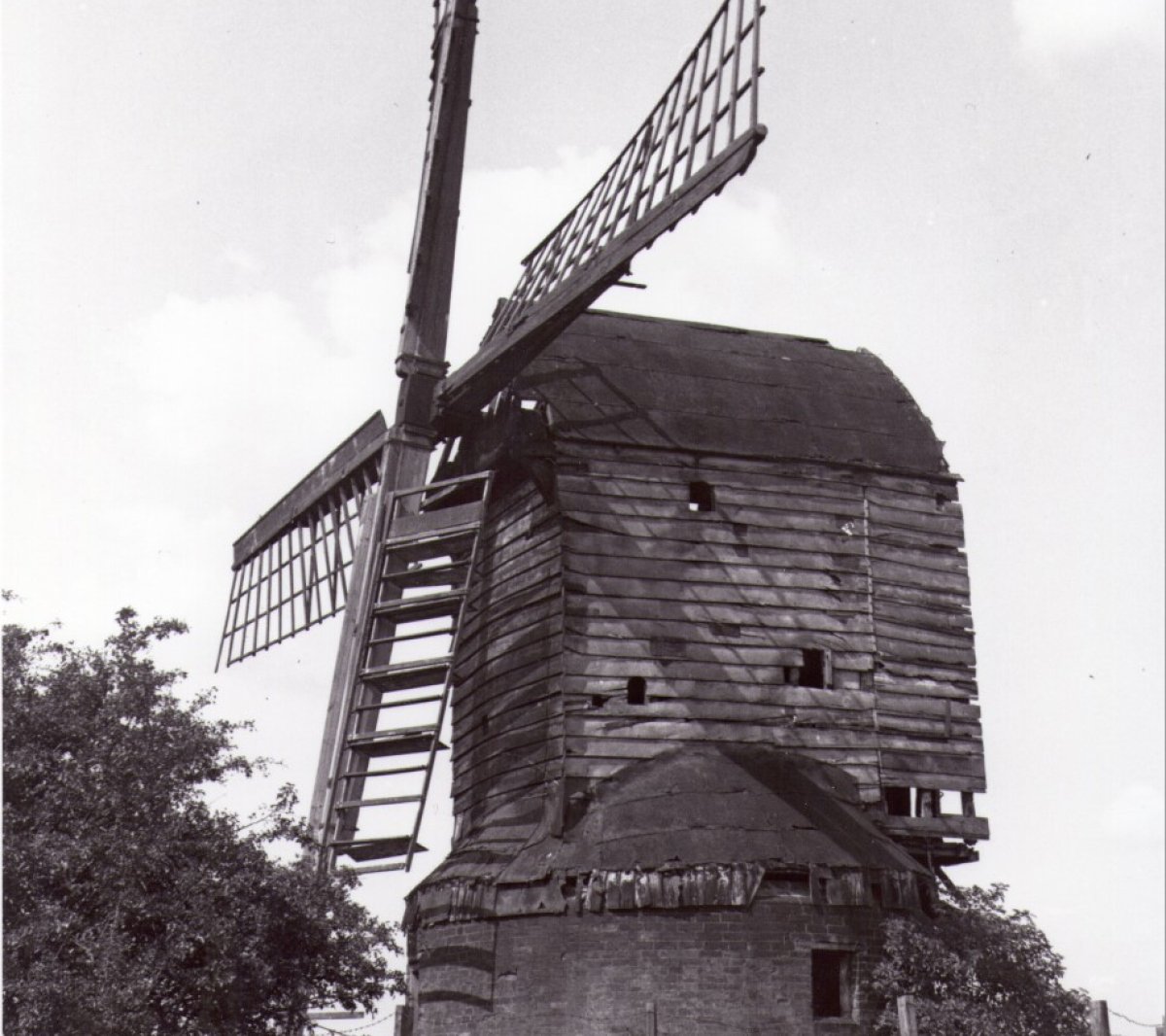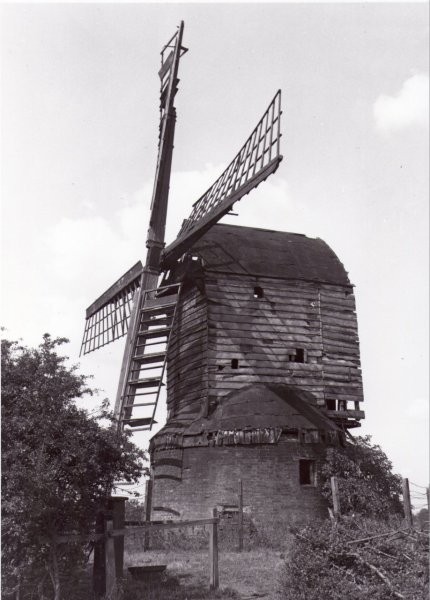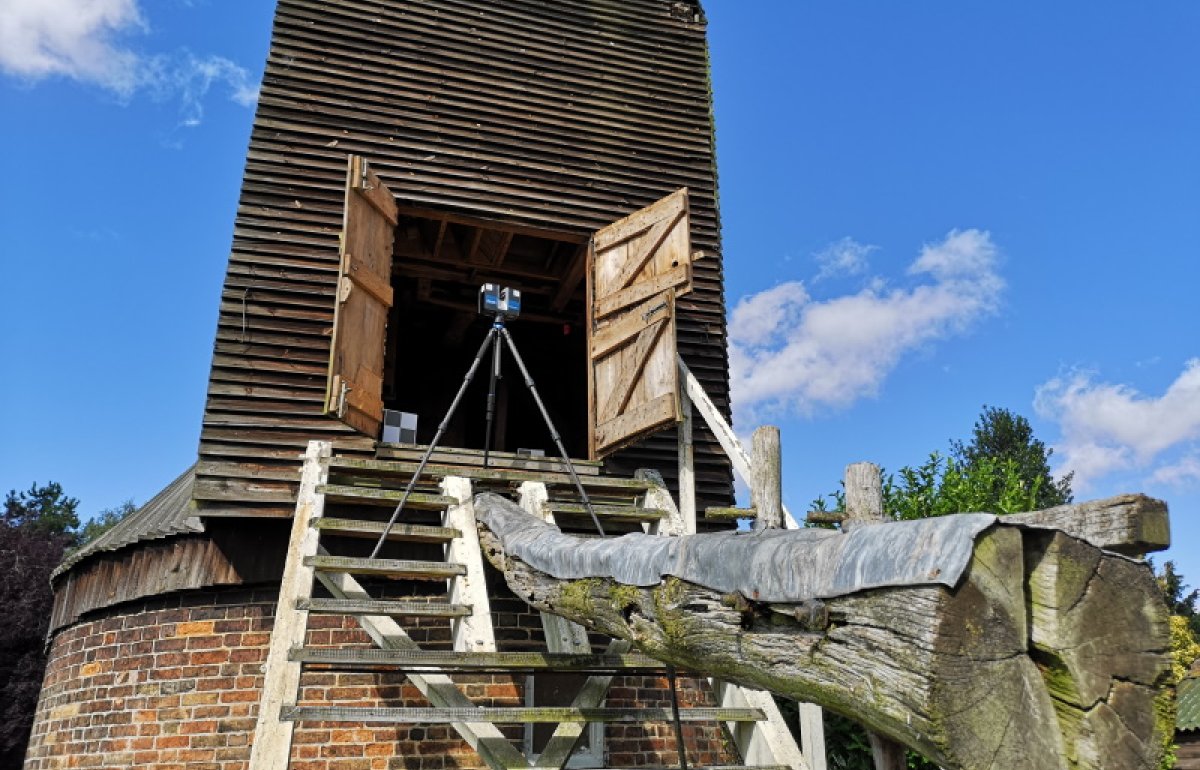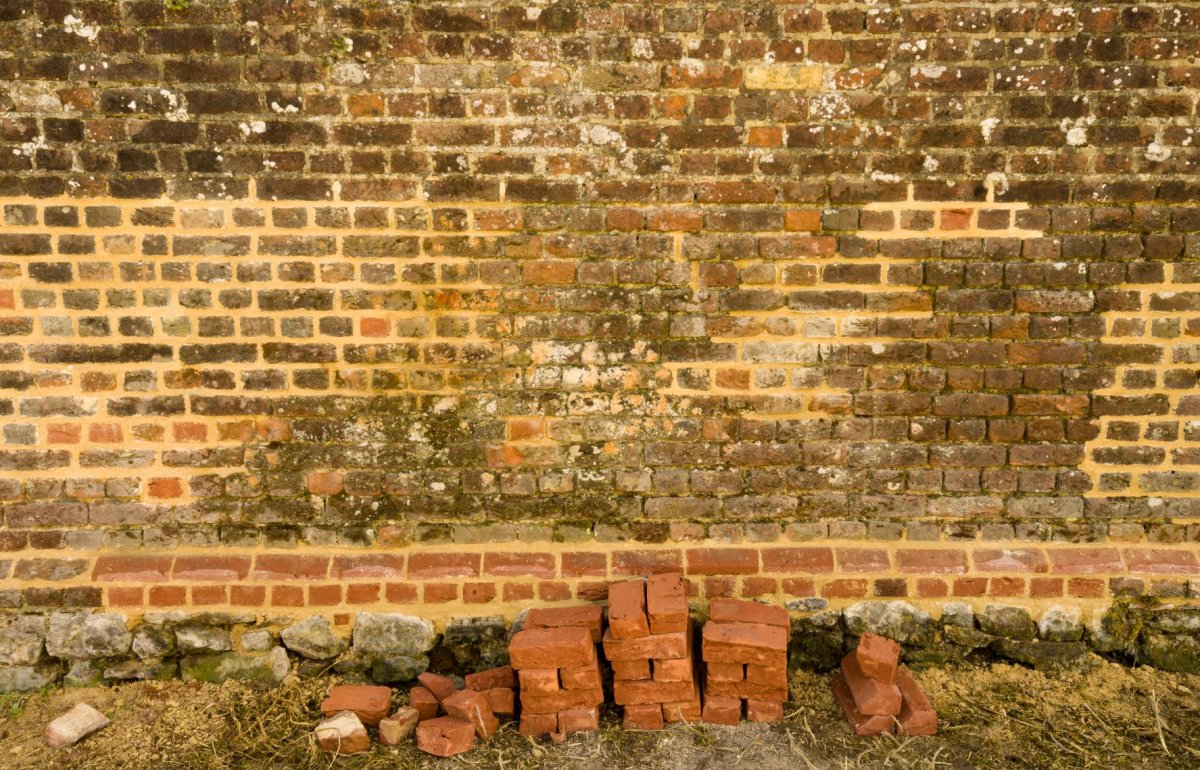In 2020-21, we undertook major repairs to Kibworth Harcourt Post Mill, removing it from the Heritage at Risk Register and making it operational for the first time since the 1930s.
Kibworth Harcourt Post Mill
This Grade II* listed windmill is a Scheduled Ancient Monument, with the majority of the mill dating from 1711 or earlier. It was a working flour mill until 1912 when its condition began to decline.
Merton College Oxford gave it to the SPAB in 1936 and in 2021, thanks to a generous bequest, we were able to start a year-long repair project to bring it back into working order.
Kibworth Harcourt Post Mill once again looks like its former self, with a white body and sails, black sheeted roofs, a roundhouse and a curved tail pole. The interior is covered with burn-marks and apotropaic marks designed to ward off evil spirits, and graffiti left by millers and visitors from the past 300 years – a fascinating insight into its long history.
Post mills
Our mill is the only surviving post mill in Leicestershire. There were once dozens of post mills in Leicestershire alone – now, there are only 50 post mills left in the whole country.
A post mill is the earliest type of traditional windmill found in the UK. The weight of the mill rests on a single post so the mill can be turned to face the wind. This post is supported by a trestle which sits on brick piers, and at Kibworth, that trestle is enclosed in a brick roundhouse.
The repair project
Repairing a historic windmill is no easy task! Here’s how we did it...
We contracted Millwrights Dorothea Restorations to undertake most of the repair work. They lifted up the 15-tonne buck (body of the mill) on a temporary steel support frame so they could repair the severely decayed original oak trestle (substructure of the mill) beneath it.
They scarfed new oak sections onto the sound timber to re-establish the original joint, then re-installed the softwood side plates.
The original interior weatherboarding was in good condition, so we kept it, and fitted new white-painted exterior weatherboarding to match the original wide boards. We repaired the brickwork on the roundhouse using locally sourced lime mortar, just as the original builders would have done.
We kept all the original graffiti, comprising initials, dates, names, sketches and apotropaic marks, which so eloquently tell the story of the people who worked here over the years.
We fitted new exterior steps and a tailpole, repaired the internal machinery, and added a cutting-edge VM Zinc roof on the buck and roundhouse to protect it all for years to come.
The previous sails had been removed in the 1970s as they were beyond repair. So, we fitted new common and spring sails, made at a workshop in Bristol. These are now fully operational and can be seen in action at our Open Days (wind-permitting, of course!).
Millwright Fellowship
The bequest that funded these repairs also funded a Millwright Fellowship. We can’t maintain our mills without skilled millwrights, but millwrighting is sadly on the Heritage Crafts Red List of Endangered Crafts.
We were therefore delighted to have carpenter Toby Slater as our first Millwright Fellow in 2021. Toby worked with Dorothea Restorations on the repairs, helping construct new sails and crafting the new external oak steps.
Read more about millwrighting on our blog from 2022 Millwright Fellow Owen Bushell, 2023 Millwright Fellow Dan Cheetham and Mills Committee Chair Mildred Cookson.
Interested in applying? Find out more about the Millwright Fellowship.
Thanks!
It takes an awful lot of talented and dedicated people to make a repair project like this happen. Our thanks go to:
-
Millwrights Dorothea Restorations who undertook most of the repair work
-
2004 SPAB Scholar Naomi Hatton, the engineer in charge of the project
-
Former SPAB Technical Advisor Luke Bonwick who assisted and provided drawings for Dorothea Restorations
-
2021 SPAB Millwright Fellow Toby Slater who worked on the repairs, helping construct new sails and crafting the new external oak steps
-
Terra Measurement who did a full engineering report, 3D survey and fly through
-
Cambridgeshire Windmills Consultancy who prepared the schedule of work
-
Buildings archaeologist James Wright of Triskele Heritage who investigated the graffiti
-
Local historian David Holmes who provided valuable information
-
Mills Section Committee Chair Mildred Cookson who was a technical advisor on the project
-
All our volunteers who have donated their time to looking after the mill and opening it to visitors
Find out more
Visit the SPAB YouTube channel to watch a fly through of the mill, find out all about Kibworth’s historic graffiti and see how the oak staircase was made. You can also hear more on BBC Radio Leicester.
How to visit
Book your free guided tour of Kibworth Harcourt Post Mill this National Mills Weekend.
Kibworth Harcourt Post Mill is on private ground and only open to the public on select days in the year. Subscribe to our eNewsletter to hear about upcoming open days and events, or email kibworthmill@spab.org.uk to arrange a small group visit.
Want to help keep the sails turning at Kibworth? Contribute to the Mill Repair Fund.

